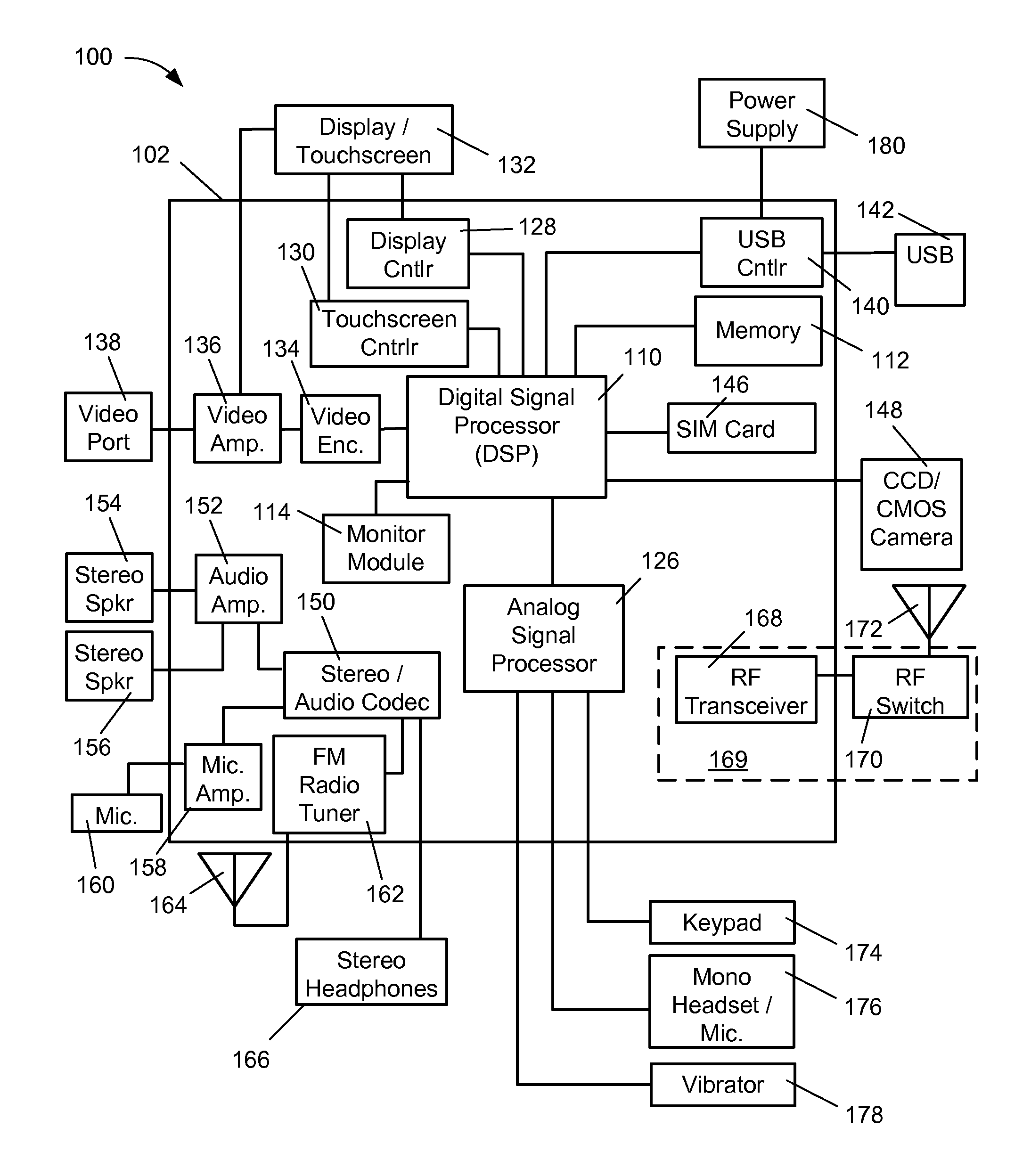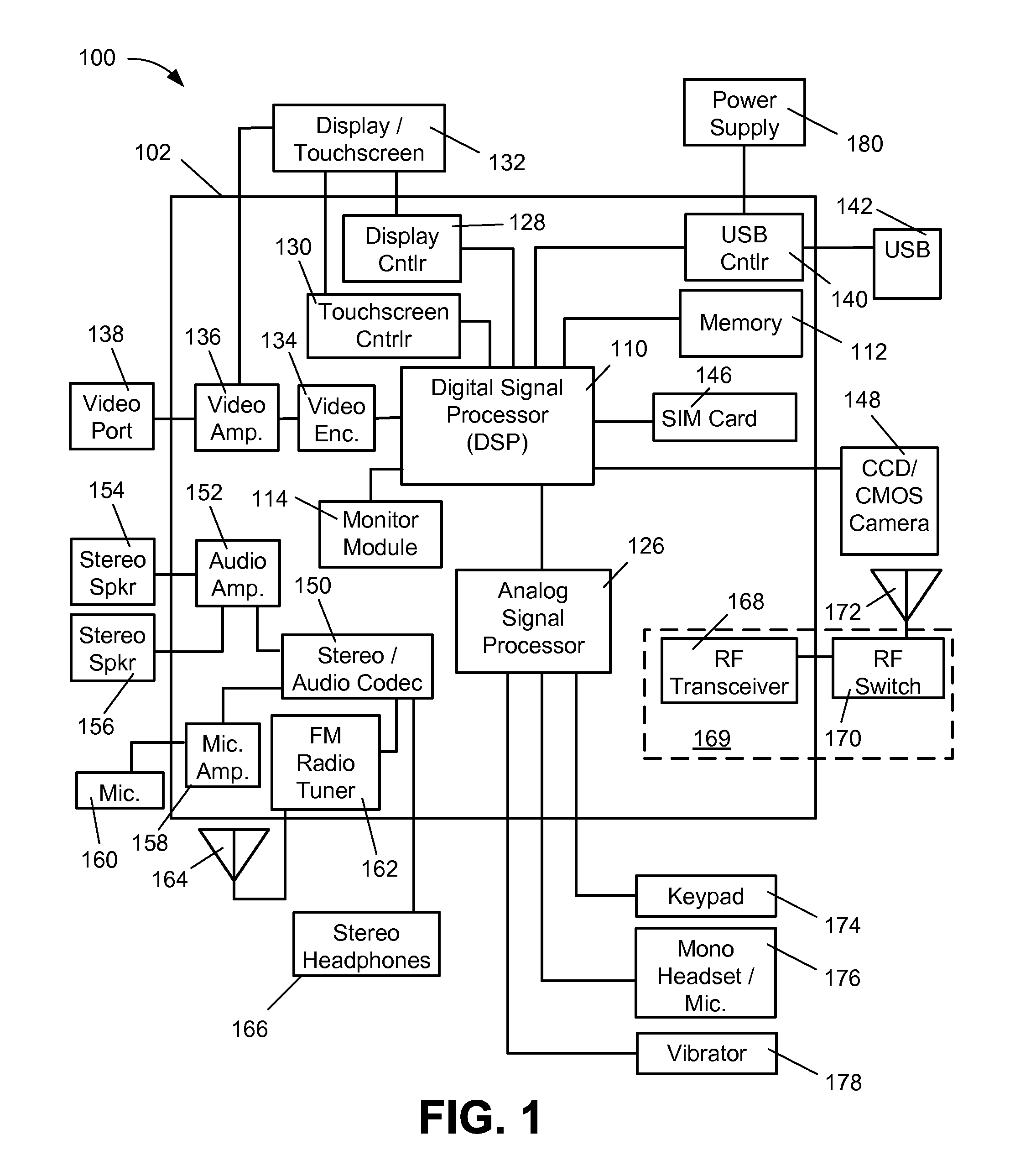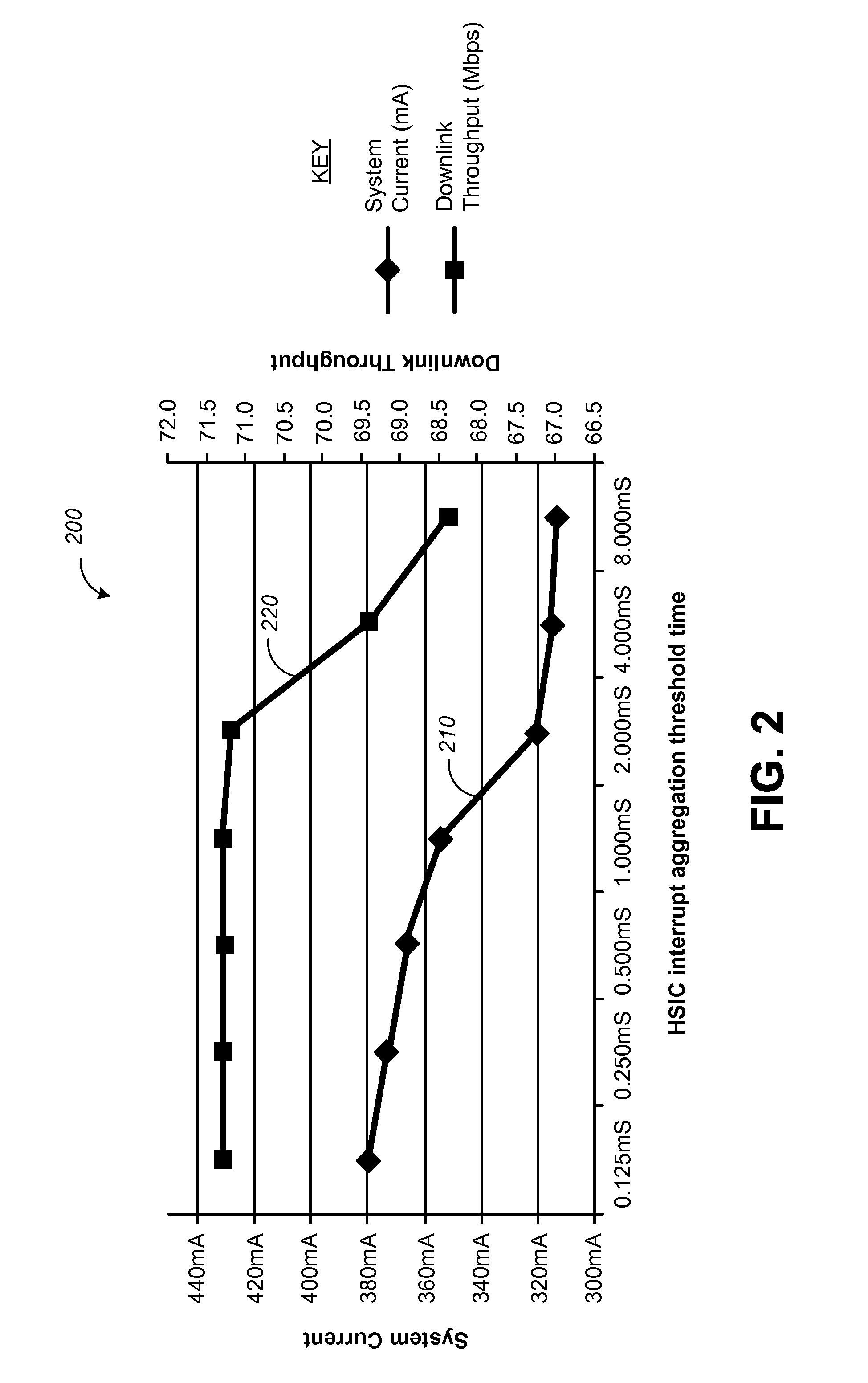Dynamic adjustment of an interrupt latency threshold and a resource supporting a processor in a portable computing device
a technology for interrupt latency and portable computing, applied in computing, digital computers, instruments, etc., can solve the problems of affecting user experience, affecting data consumption, and corresponding increase in power consumption, so as to achieve the effect of preserving data consumption and not adversely affecting user experien
- Summary
- Abstract
- Description
- Claims
- Application Information
AI Technical Summary
Benefits of technology
Problems solved by technology
Method used
Image
Examples
Embodiment Construction
[0019]Improvements in the configuration and management of a data call or data transfer session are illustrated and described to address the above-mentioned deficiencies during data transfer sessions or data calls operable on a portable computing device. The improved portable computing device can achieve reductions in power consumption during various data transfer sessions, including but not limited to, file transfers, multimedia streaming, and Internet browsing applications.
[0020]The term “exemplary” is used herein to mean “serving as an example, instance, or illustration.” Any aspect described herein as “exemplary” is not necessarily to be construed as preferred or advantageous over other aspects.
[0021]In this description, the term “application processor” is used to describe a hardware element capable of accessing executable content, such as: object code, scripts, byte code, markup language files, and patches. In addition, such an “application processor” referred to herein, is furt...
PUM
 Login to View More
Login to View More Abstract
Description
Claims
Application Information
 Login to View More
Login to View More - R&D
- Intellectual Property
- Life Sciences
- Materials
- Tech Scout
- Unparalleled Data Quality
- Higher Quality Content
- 60% Fewer Hallucinations
Browse by: Latest US Patents, China's latest patents, Technical Efficacy Thesaurus, Application Domain, Technology Topic, Popular Technical Reports.
© 2025 PatSnap. All rights reserved.Legal|Privacy policy|Modern Slavery Act Transparency Statement|Sitemap|About US| Contact US: help@patsnap.com



